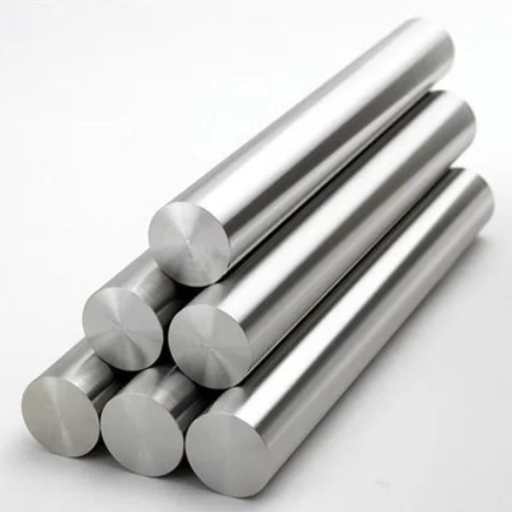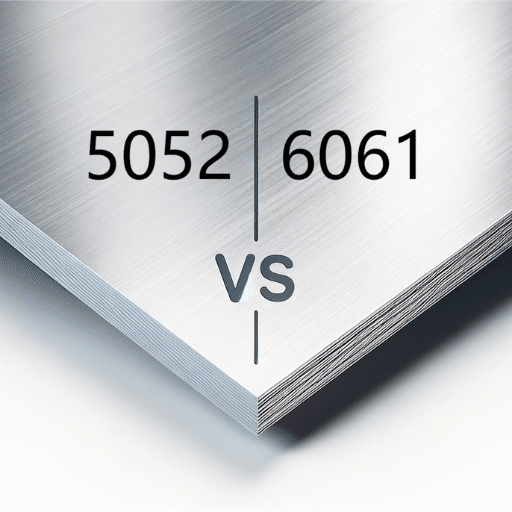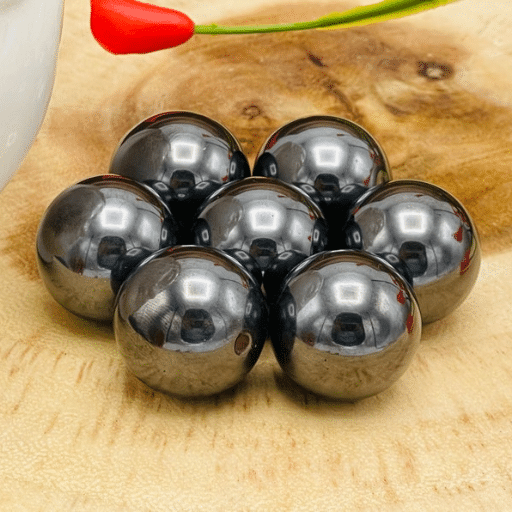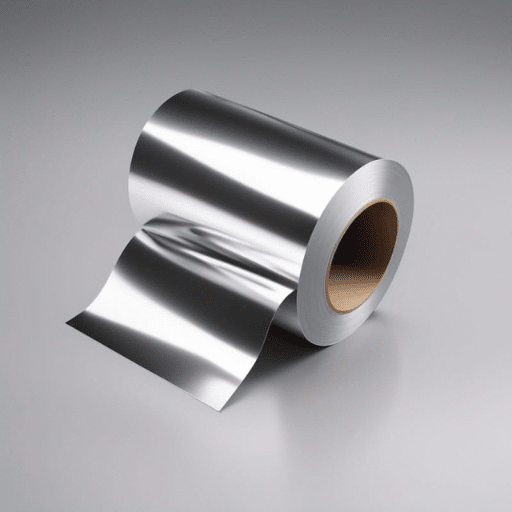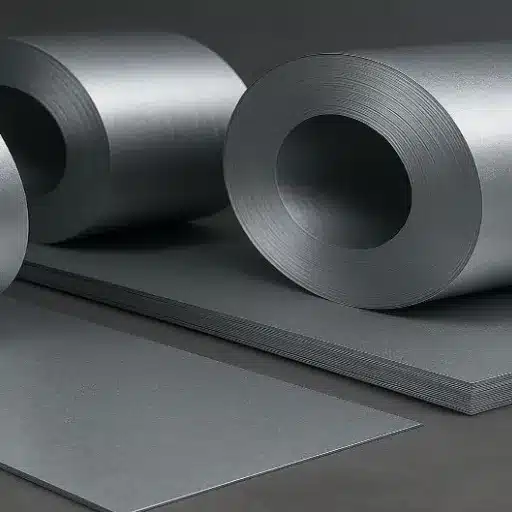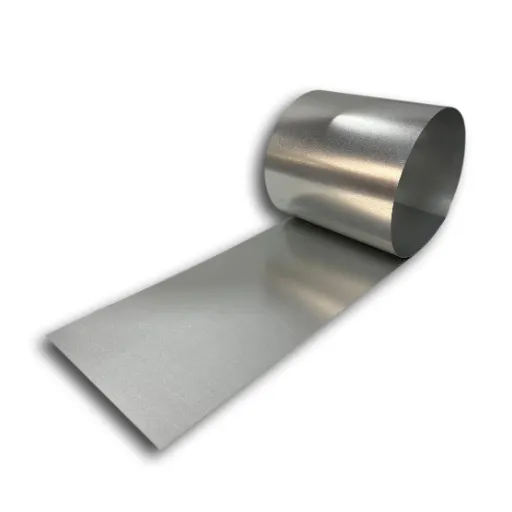Super Duplex 255 stands out as one of the most advanced materials in the field of metallurgy. Renowned for its exceptional strength and superior corrosion resistance, this alloy has become indispensable in industries where extreme conditions demand unparalleled performance. Whether utilized in marine engineering, chemical processing, or oil and gas applications, Ferralium 255 offers a unique balance of mechanical durability and resistance to chloride-induced stress corrosion cracking. This article dives deep into the unique properties, applications, and advantages of Super Duplex 255, providing you with a comprehensive understanding of why this alloy has become a game-changer for modern engineering solutions.
Unique Properties of Alloy F255
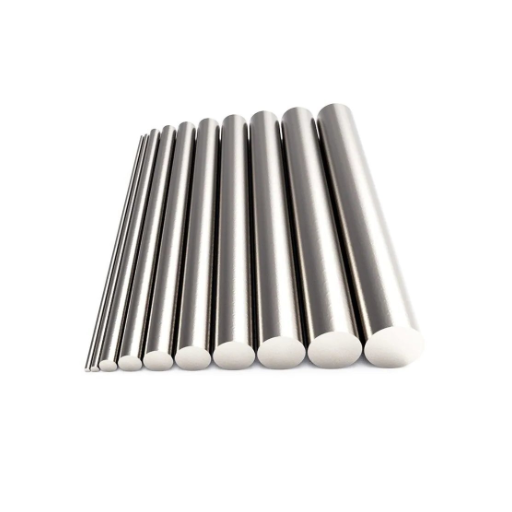
High Strength and Durability
Among super duplex stainless steels, Ferralium 255 turns out to be thoughtfully designed for superior mechanical strength and durability. Essentially, an enhanced strength level, nearly twice as high as that in conventional types of austenitic and ferritic grades, can be explained by its dual-phase microstructure and balanced chemistry with Cr, Mo, and N. This ensures it retains excellent strength to bear loads even in the worst service conditions without yielding to any degradation.
Wear resistance and mechanical stress resilience offered by the Ferralium provide an ideal solution to highly stressful environments, such as high-pressure subsea pipelines or chemical plants, where the mixture of abrasives is a regular issue. This evolution in yield strength allows design for operational advantages aimed at using lightweight components operationally without loss in safety or performance, thus contributing cost-effectively to very big systems.
Another aspect is that Ferralium 255’s ability to withstand low temperatures and go on to resist stress fatigue substantiates its importance in applications that require long-term reliability. It possesses the ability to sustain dynamic mechanical forces, thus ensuring longevity in both static and rotational equipment. Consequently, this makes it a very preferable choice for industries that prioritize tough construction and sustainable choices in materials.
Corrosion Resistance in Chloride Environments
With its distinctive metallurgical makeup, Ferralium 255 shows extraordinary resistance to corrosion in chloride environments. Contrasted against other materials prone to pitting, crevice corrosion, and stress corrosion cracking under chloride attack, this super duplex stainless steel, comprising chromium, molybdenum, and nitrogen, actively resists these effects. High content of alloying elements creates a passive film on the surface of the material that dramatically decreases the possibility of localized corrosion attacks.
In high-chloride environments such as seawater or brine, where ordinary stainless steels often fail, Ferralium 255 performs excellently. This has been certified by lab testing and actual installation and maintenance cases, resisting pitting corrosion even when chloride concentrations exceed 30,000 ppm. Therefore, it is used mostly by the marine, chemical processing, and desalination industries where the exposure to chlorides is a frequent occurrence, coupled with truly corrosive conditions.
Moreover, it retains its corrosion resistance across a wide temperature range and remains durable in ambient and elevated temperatures, minimizing maintenance, maximizing the service life of the equipment, thereby reducing operational costs and downtime. Higher structural integrity and less vulnerability in chloride environments make Ferralium 255 a truly dependable and efficient material for industrial applications.
Resistance to Stress Corrosion Cracking
Since stress corrosion cracking is the most usual mode of failure in environmental conditions where tensile stress exists, Ferralium 255 offers excellent resistance to SCC. The duplex stainless steel nature of the material, endowed with a balanced mixture of austenitic and ferritic phases, confers high resistance to SCC. Such a two-phase structure diminishes the propensity to cracking commonly witnessed in conventional austenitic stainless steels, especially when in chloride- or sulfide-infested environments.
Some of the very important aspects that favor Ferralium 255 for the SCC environment are the high chromium, molybdenum, and nitrogen contents. These enhance passivity and stabilize the protective oxide film against local attacks. Meanwhile, copper addition further improves the alloy’s resistance in acidic environments, which most often attack alloys through the same stress corrosion cracking mechanism. Therefore, a composition consisting of these alloying elements lends stability under both mechanical stress and chemical adverse environments.
Ferralium 255 has been proven to outperform in fields and laboratories regarding resistance to SCC. Its adoption of the material for components regularly exposed to high-pressure and high-temperature environments, where there is a high likelihood of SCC occurrence, includes oil and gas, marine, and chemical industries. With proven track records of handling such environments, proving best for challenging environments, its suitability for long-term, high-performance use in fields has been confirmed.
Chemical Composition of Super Duplex 255
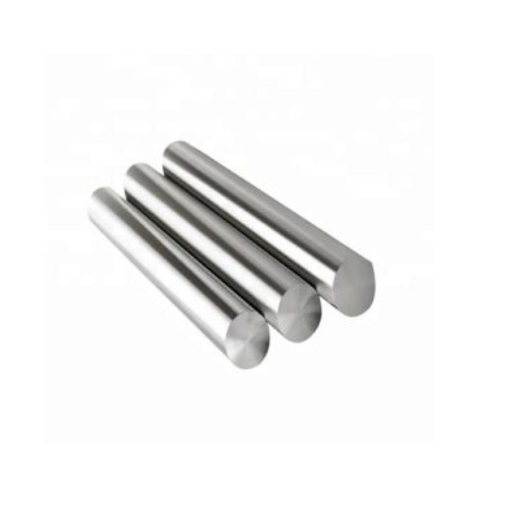
Elements in Ferralium 255
Ferralium 255, a super duplex stainless steel, was designed to find superior mechanical and corrosion-resistant properties. The exact chemical composition of Ferralium 255 consists of:
- Chromium (Cr): About 24-26%, which forms a passive oxide layer that provides corrosion resistance. In particular, it protects against crevice and pitting corrosion.
- Nickel (Ni): 4.5-6.5%; increases toughness and ductility. Nickel is an essential element to stabilize the austenitic phase within the duplex matrix.
- Molybdenum (Mo): 2.9-3.9%; increases resistance to localized corrosion, stress corrosion, and cracking, and pitting.
- Copper (Cu): 1.5-2.5%; enhances resistance to sulfuric acid and other aggressive chemical environments.
- Nitrogen (N): 0.1-0.25%; provides extra strength along with resistance to chloride-induced stress corrosion cracking.
- Other Elements: Controlled additions of manganese (Mn), silicon (Si), and carbon (C) are also present; these elements are crucial for maintaining welding, mechanical stability, and corrosion properties.
This precise balance in alloying element composition maintains the dual-phase microstructure of Ferralium 255, which consists of about 50% austenite and 50% ferrite. Due to this unique composition, the superduplex material finds an extreme strength-toughness combination, with equally good corrosion resistance in severe environments.”
Role of Chromium and Other Alloys
Chromium (Cr) plays a paramount role in Ferralium 255 in realizing the remarkable corrosion resistance and mechanical properties of an alloy. By means of an adherent, passive film from oxides on the surface of the alloy, chromium imparts a further degree of protection from oxidation and various forms of localized corrosion, such as pitting and crevice corrosion, even in aggressive environments like seawater and chemical processing. The amount of chromium in Ferralium 255 is normally between 24% and 26%, which allows it to achieve excellent behavior as a dual-phase material.
- Molybdenum (Mo): Present in levels of 3.0–4.0%, molybdenum enhances resistance to pitting and crevice corrosion and increases the strength of the alloy at high temperatures.
- Nickel (Ni): At 5.5–7.5% of the composition, nickel helps stabilize the austenitic phase within the structure, maintaining a well-balanced microstructure that heightens toughness and ductility.
- Nitrogen (N): At concentrations up to 0.20%, nitrogen improves both pitting resistance and mechanical strength, offering an economical means to improve performance without compromising corrosion resistance.
- Manganese (Mn): At around 1.5%, manganese is still mostly needed for weldability and to counterbalance the stabilizing effect of nitrogen.
- Silicon (Si): Resists oxidation at elevated temperatures, at approximately 0.8% concentration. In doing so, it imparts overall durability to the alloy.
All these alloying elements are optimized to render Ferralium 255 capable of unparalleled performance under some very demanding industrial scenarios. Their balancing act is crucial in maintaining the dual-phase microstructure and allowing the alloy to meet the most rigorous requirements in operations.
Impact of Composition on Performance
The precise composition drives the mechanical properties, corrosion behavior, and operational reliability of Ferralium 255. Controlled additions of chromium and molybdenum impart excellent resistance against chloride-induced pitting and crevice corrosion, which qualifies it for critical applications in marine or chemical processing industries. On the other hand, the nitrogen content increases strength and fatigue resistance, simultaneously preserving its ductility and suitability in myriad cyclical loading conditions.
Experiments have shown the importance of the microstructure balance of austenite and ferrite phases attained by the particular chemistry of the alloy to increase its yield strength to whatever is more than 80 ksi (552 MPa). It has also been proven in laboratory studies that Ferralium 255 can provide tensile strengths of up to 115 ksi (793 MPa) with a minimum toughness limit, thus impeding its fracture in both static and dynamic industrial processes and ensuring expanded life over other standard stainless steels.
The synergy between its elemental makeup is also extended to thermal properties; thermal fatigue is resisted better by Ferralium 255, and the alloy preserves dimensional stability under operating thermal cycles, which proves essential for heat exchangers or pressure vessels. The precision bestowed upon its compositional design claims the best performance specifications in the realm of demanding operating environments.
Applications of Super Duplex 255
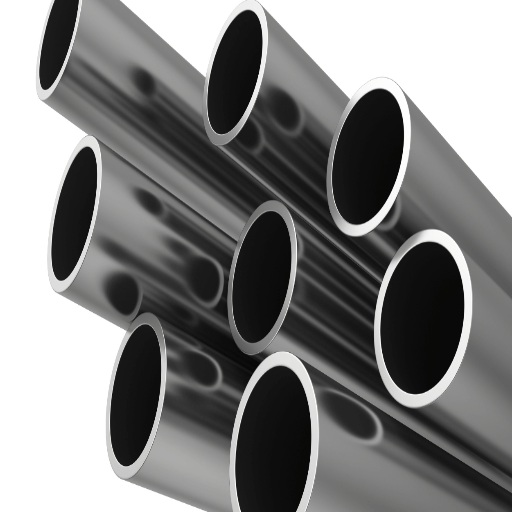
Oil and Gas Industry
Super Duplex 255 remains a landmark material in the oil and gas industry for mechanical properties and corrosion resistance. Given the high molybdenum and chromium content with nitrogen addition, this alloy is capable of resisting enormous corrosive environments in marine and onshore activities. It includes the possibility of superior resistance to chloride-induced stress corrosion cracking and pitting, two of the paramount concerns in subsea pipelines, heat exchangers, and riser systems. Its remarkably high yield strength and tensile properties provide for lightweight construction and thereby lay down terms for safer operations, as structural efficiency assumes pride of place in deepwater exploration.
In ensuring the manufacture of components like subsea manifolds, separators, or flowlines, Super Duplex 255 stands out better than conventional alloys by taking lifecycle performance to greater heights. By interfering with material degradation brought about by HPHT conditions, operators can thus go for reduced maintenance schedules and downtimes, enhance their profitability, and gain operational efficiencies. Its abrasion resistance is also highly applauded since it is an indispensable requirement for equipment used to convey sand-laden fluid, as material wear is a strong threat to integrity and functionality.
The second most crucial property afforded by Super Duplex 255, in oil and gas applications, is weldability and ease-of-fabrication. Welded components made from this alloy maintain the microstructural balance so as to ensure uniform corrosion resistance and mechanical properties through long-term application. Combined with its ability to withstand sour gas environments (rich in hydrogen sulfide), Super Duplex 255 becomes the obvious choice for acidizing operations, gas injection, and other primary processes. With new exploration efforts underway in hostile environments and with a transition towards more environmentally friendly operations, dependence on materials such as Super Duplex 255 is assured to grow strongly well into the foreseeable future.
Chemical Processing Facilities
Materials that can resist severe conditions while exhibiting utmost performance and reliability are used in the chemical processing industry. Super Duplex 255 fulfils these requirements by offering superior resistance to pitting, crevice corrosion, and stress corrosion cracking, all of which are crucial considerations in industries where harsh chemical environments prevail. The presence of high chromium, molybdenum, and nitrogen gives it excellent performance to resist chlorides and other aggressive chemicals, which is the common case in chemical processing.
Research has proved that the material has a long fatigue strength and high thermal stability at elevated temperatures, suitable for heat exchangers, pressure vessels, and reactor systems. These properties are highly applicable to the polymer production process, caustic soda manufacturing, and chemical storage tank construction. The combination of high mechanical strength and corrosion resistance in Super Duplex 255 alloys results in high cost savings concerning maintenance contribution and enhanced service lifetime possibilities, making it a worthwhile investment in intricate industrial applications.
More recently, the developments of fabrication methods like laser welding and precision forming have enhanced the flexibility of Super Duplex 255 for custom-sized components that meet the demands of modern chemical processing. By integrating this material into the fabric of the facility, industries will have themselves guaranteed compliance with stringent environmental and operational standards as well as a sustainable and reliable approach to chemical processing infrastructure.
Marine Engineering and Offshore Structures
Marine engineering and offshore structure design were perhaps the epitome of modern technical innovations, this one being considered due to the demand for sustainable solutions in hostile oceanic environments. Materials such as Super Duplex 255 become game changers as they resist pitting and crevice corrosion better than any other material in saline and chloride-rich environments. Hence, they become crucial in offshore oil and gas platforms, subsea pipelines, and renewable energy considerations like offshore wind farms. In addition, due to their high mechanical strength, they can take high pressure without compromising a structure’s ability to endure, thus allowing for minimal bulky components and thereby favoring light and cost-effective designs.
The design of structures as such systems is now done in a computer environment that utilizes hydrodynamic simulation tools to assure that the structures can resist environmental dynamic loads presented by waves, currents, and winds. Finite element analysis (FEA) is used for calculating stress distribution in critical areas to allow engineers to rectify concerns in the design phase prior to actually going to fabrication. More recent AUVs fitted with high-precision sensors now monitor and inspect underwater installations with the highest accuracy, tracking variations structurally and environmentally with time.
The deployment of these advanced technologies, including additive manufacturing and robotic welding, into the late offshore construction workflow resulted in an improvement in efficiencies and a significant reduction in lead times. Today, 3D printing services are used for producing complicated geometries required for subsea components to minimize material wastage, thus ensuring very tight tolerances. Also considered are smart coatings with embedded self-healing properties to protect offshore structures for the long term, thereby extending the operational lifespan against severe marine conditions. The future of marine engineering rests on such technologies, which will make sustainable and resilient offshore infrastructure appear feasible from the industry’s side.
Benefits and Limitations of Super Duplex 255
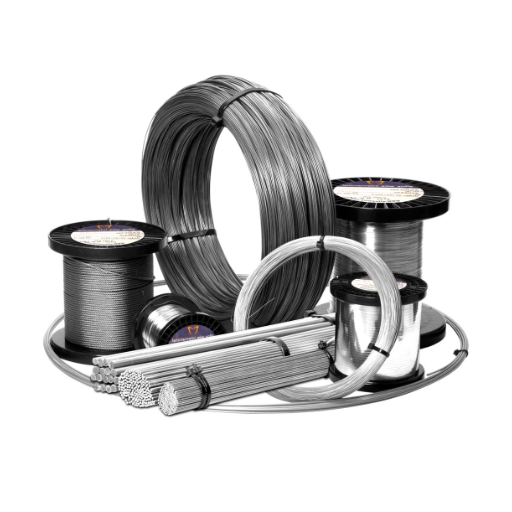
Cost-effectiveness and Long Service Life
Super Duplex 255, a category of stainless steel, is known for excellent performance in highly corrosive environments, especially marine and chemical processing settings. Given the higher chromium, molybdenum, and nitrogen levels in its makeup, these grades stand up to pitting, crevice corrosion, and stress corrosion cracking under even aggressive chloride conditions. These properties also made it an economical choice since its high resistance would reduce frequent maintenance requirements and repairs compared to normal steels.
Economically speaking, Super Duplex 255 is appreciably balanced between upfront material cost and the lifecycle value. It has a long service life, usually longer than lesser alloys, which ensures minimal downtime; hence, the substantial savings over time. For instance, research suggests that corrosion resistance would allow an increased operational lifespan of 20 to 30 percent in offshore scenarios where normal carbon steels would deteriorate quickly. Therefore, it becomes a very important one for desalination plants, subsea pipelines, and chemical reactors that require continuous performance over stretches of decades.
Slightly more expensive initially were its procurement costs compared to normal duplex steels; yet, because of the material’s mechanical properties-high tensile strength, and high yield strength, enables thin sections to be used in structural applications. Thin sections result in cost reductions by minimizing the weight of material and also related fabrication expenses. Hence, given operational efficiency and reliability in the long run, this grade continues to see preference among industries that see it as a blend of engineering excellence and judicious financial planning.
Challenges in Welding and Fabrication
Super Duplex 255 welding and fabrication pose particular challenges due to its metallurgical composition and attack susceptibility. One major drawback is the HAZ sensitization of the material occurring upon excessive heat build-up during welding. Intermetallic phases, namely sigma and chi phases, precipitate, which impairs the mechanical and corrosion resistance of the material. Hence, a very tight control of heat input is required, and therefore, advanced welding techniques, such as gas tungsten arc welding or plasma arc welding, become necessary for proper heat control.
Another paramount challenge is weld decay or sometimes reduction of toughness near the weld region, most vulnerable to incorrect cooling rates. Performing a post-weld heat treatment (PWHT) targeted at the dual-phase constitution of the material can stabilize the microstructure and reduce internal stresses. In addition, maintaining an appropriate ferrite-to-austenite ratio within the weld zone is equally important to conserve the inherent properties of the Super Duplex 255. Discrepancies in phase balance work adversely on the mechanical strength in terms of corrosion resistance.
Finally, choosing the correct filler metals and adhering to rigid welding specifications would largely avoid weld defects, such as porosity, inclusions, or lack of fusion. These welds should be subjected to NDT, including ultrasonic testing and radiographic inspection, before application. Addressing the above challenges highlighted under precise engineering controls and best welding practices will give fabricators an upper hand in unleashing the full potential of Super Duplex 255 for structural or corrosive applications.
Recent Advancements in Super Duplex 255
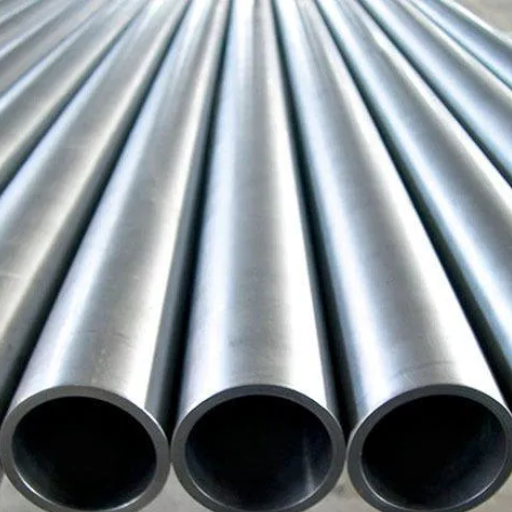
Innovations in Processing Techniques
Recent developments in processing techniques of Super Duplex 255 have significantly improved its performance in aggressive applications. Major technological advances have come through the newly developed thermomechanical processing methods that allow one to tailor grain structure for optimized mechanical properties while minimizing phase imbalances during production. From a heat treatment point of view, controlled cycles and cooling rates have been implemented by heat treatment companies to reduce the formation of unwanted phases such as the sigma phase, thus retaining corrosion resistance.
The other breakthrough lies in automated welding processes, such as laser welding and friction stir welding. Enhanced heat input control with these procedures results in better weld quality and lower distortion. Subsequent surface treatments, such as electropolishing and vapor phase coatings, provide even further enhancement against pitting and crevice corrosion in chloride-bearing environments.
Predictive modeling and simulation tools are also utilized for Super Duplex 255 processing nowadays. These tools use machine learning algorithms and finite element analysis to help predict microstructural changes and provide the optimization of process parameters to attain the best quality output with possible minimum material wastage. Such developments signify the move towards marrying conventional metallurgical methods with the latest technology to fully harness the capabilities of this high-performance alloy.
Emerging Applications in Industry
Super Duplex 255 finds application in multiple domains where the need for superior mechanical qualities, corrosion resistance, and durability is paramount. The following five applications are among the up-and-coming uses for this all-important alloy:
- Offshore Oil and Gas Production: The fabrication of subsea piping, heat exchangers, and pressure vessels is increasingly carried out using Super Duplex 255. The excellent resistance to pitting and stress corrosion cracking lends its long-term reliability in the harsh marine environment. For instance, at depths where high salinity and pressure conditions demand materials to be extremely robust with less maintenance.
- Chemical Processing Equipment: With a high content of molybdenum and chromium, Super Duplex 255 finds itself being the best fit for chemical reactors, storage tanks, and evaporators, especially in processes involving strong acids, chlorides, and other corrosive agents. It has been shown that, when compared with conventional stainless steels, the failure rate of equipment has been lowered by more than 30% by using this alloy.
- Desalination Plants: From a growing global demand, Super Duplex 255 is highly utilized in desalination processes, most notably in reverse osmosis systems and evaporator tanks. The corrosion resistance to seawater and resistance to scaling guarantee operational efficiency and lowered costs on maintenance during prolonged periods of use.
- Pulp and Paper Industry: The pulp and paper industry uses Super Duplex 255 in various applications, including digesters, bleach plant components, and recovery boilers. Resistance to very acidic and chloride-laden service environments of this alloy promotes longer life for the equipment and less downtime, paving the way for more consistent production capacities.
- Renewable Energy Infrastructure: Here is yet another example of the growing importance of this alloy within new applications for geothermal and tidal energy systems. Heat exchangers and structural supports made of Super Duplex 255 are able to withstand very high temperatures and aggressive environments, thereby promoting the overall performance and sustainability of renewable energy installations.
These applications mark the beginning and middle of Super Duplex 255’s versatility and criticality, as industries evolve with newer technologies yet remain steadfast to stringent operational and environmental standards.
Future Trends and Developments
The demand for Super Duplex 255 will increase as industries prioritize efficiency, sustainability, and operational resilience. Hence, recent developments give us an idea that, in the future, developments in Super Duplex will focus on enhancing the performance characteristics of the alloy. These include improvements to its resistance to chloride-induced stress corrosion cracking and enhancements to make it usable in ultra-high-pressure systems. The innovations are designed to satisfy the urgent needs of present-day industries, especially in areas like renewable energy, chemical processing, and offshore oil and gas, wherein very harsh environmental conditions continuously test the integrity of materials.
Some trends see Super Duplex 255 integrated into hydrogen and carbon capture storage (CCS) systems. With hydrogen-promoted clean energy, portal materials must sustain high pressure and corrosive environments. The excellent mechanical strength and corrosion resistance of Super Duplex 255 make it suitable for use in pipelines, storage tanks, and process equipment for hydrogen production and CCS technologies. This gives way to forwarding decarbonization objectives at a global scale from both environmental and economic points of view.
In addition, advancements from Industry 4.0 technologies, such as computational simulation and additive manufacturing, are very hopeful for the future of Super Duplex 255. Better simulation will improve the precision of predictions of alloy performance under varying environmental conditions and provide customized solutions to meet specific industrial requirements. Meanwhile, additive manufacturing should assist in fabricating customized high-performance components made of Super Duplex 255 while cutting down on waste and time required during manufacturing. These trends increasingly prove how the evolution of technology and material science are converging to enable this versatile and reliable alloy to meet the demands of the future.
References
-
Failure Analysis of Super Duplex Stainless Steel High Pressure Pump Shaft in a SWRO Plant – A Case Study – A detailed case study on the performance of super duplex stainless steel in high-pressure applications.
-
State-of-the-art of the New Alloys in the Duplex Stainless Steel Family – A comprehensive academic review of duplex, super duplex, and hyper duplex stainless steels.
-
The Development of Qualification Standards for Cast Super Duplex Stainless Steel (2507 Wrought Equivalent) – Research on the standards and properties of super duplex stainless steel, including Ferralium 255.
-
Galvanic Coupling of Additively Manufactured Super Duplex Stainless Steel Clad on Carbon Steel Substrate – A study on the corrosion behavior and manufacturing techniques of super duplex stainless steel.
-
Centrifugally Cast Duplex Stainless Steel – Insights into the applications and specifications of duplex and super duplex stainless steels.
Frequently Asked Questions (FAQ)
Q: What is super duplex 255?
A: Super duplex 255, also known as UNS S32550, is a type of super duplex stainless steel that combines a high content of chromium and molybdenum, providing excellent corrosion resistance and strength. This alloy is widely used in industries such as oil and gas exploration due to its durability and reliability.
Q: How does super duplex 255 compare to conventional duplex stainless steels?
A: Super duplex 255 offers superior properties compared to conventional duplex stainless steels. It features a higher alloy content, which results in better resistance to stress corrosion and exceptional corrosion resistance, making it suitable for demanding applications.
Q: What are the applications of super duplex 255?
A: Super duplex 255 is commonly used in applications such as pumps and valves, oil and gas exploration, and pollution control systems due to its high strength and excellent corrosion resistance, particularly in environments with sulfuric acid and phosphoric acid.
Q: What is the significance of the pitting resistance equivalent in super duplex 255?
A: The pitting resistance equivalent (PRE) of super duplex 255 is a critical measure of its ability to resist localized corrosion. This alloy typically has a PRE value that indicates its superior performance in environments prone to pitting, especially when exposed to chlorides.
Q: Can Super Duplex 255 be used in ambient and sub-zero temperatures?
A: Yes, Super Duplex 255 is suitable for use in both ambient and sub-zero temperatures. Its mechanical properties remain stable in a wide range of conditions, making it a versatile choice for various applications.
Q: What is the annealed condition of super duplex 255?
A: The annealed condition of super duplex 255 refers to the heat treatment process that enhances its mechanical properties. This treatment improves its strength and corrosion resistance, making it ideal for demanding applications.
Q: How do bolts and fasteners made from super duplex 255 perform?
A: Bolts and fasteners made from super duplex 255 exhibit excellent corrosion resistance and high strength, making them ideal for use in harsh environments such as chemical processing and marine applications.
Q: What are the benefits of using super duplex stainless steel in construction?
A: Using super duplex stainless steel like super duplex 255 in construction provides numerous benefits, such as high resistance to abrasion, exceptional corrosion resistance, and the ability to withstand harsh conditions, which enhances the longevity of structures.
Q: What standards apply to super duplex 255?
A: Super duplex 255 adheres to various industry standards, including ASTM specifications, which ensure its reliability and performance in critical applications. Its classification under UNS S32550 provides a means to identify its unique properties.

